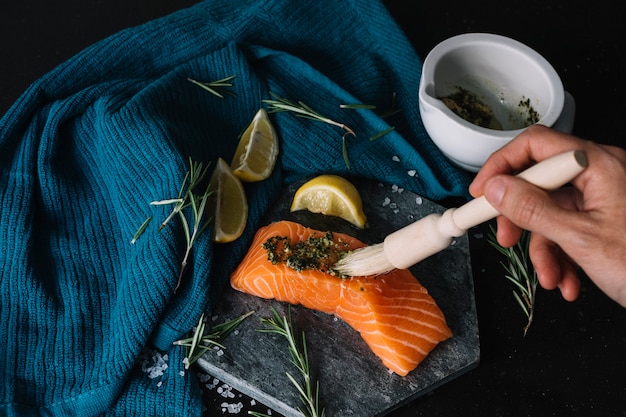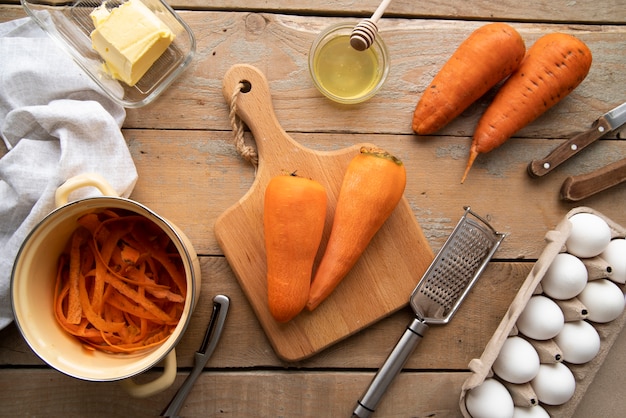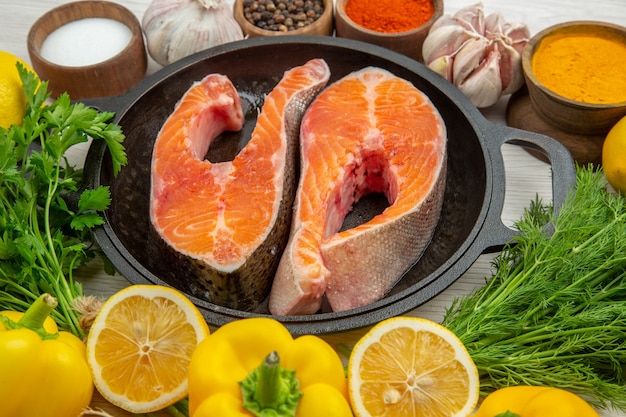Ah, the joy of a perfectly seared piece of salmon! That crisp, golden skin, the tender, juicy flesh, and that incredible, unmistakable salmon flavour – pure culinary bliss. And when it comes to salmon, Sockeye reigns supreme, offering a richness and depth of flavour that’s hard to resist. It's a true gourmet experience, with a buttery texture and a gorgeous orangey hue that’s just as appealing as the taste.
I’ve been a self-proclaimed salmon enthusiast for years, always on the lookout for new ways to cook it, and my go-to method is hands down pan-searing. It’s simple, quick, and delivers that delicious sear we all crave. Plus, you don’t need any fancy equipment – just a good quality pan and a few basic ingredients. Today, I’m going to share my recipe for pan-seared sockeye salmon – a dish that’s always a crowd-pleaser and a true testament to the power of simple ingredients.
(Part 1) The Salmon

Let’s start with the heart of the dish – the Sockeye salmon. Now, you’ll find many different cuts of salmon in the market, but for pan-searing, I stick to skin-on fillets. Why? Simple. They cook more evenly, resulting in that beautifully crisp skin we all love. And let’s be honest, a crispy skin just makes the whole dish look more impressive, doesn’t it?
choosing the right salmon
When you’re picking your salmon, look for fillets that are firm to the touch, with a vibrant, bright orange colour. A fresh, clean scent is another key sign of good quality. Steer clear of fillets that look discoloured, have a slimy texture, or a strong fishy smell.
Personally, I always gravitate towards Alaskan Sockeye – it has a unique flavour, a stunningly rich red-orange colour, and it’s usually wild-caught, which I find makes all the difference. But of course, you can find fantastic Sockeye from your local fishmonger, too.
Preparing the Salmon
Once you’ve got your beautiful fillets, it’s time for some simple prep. I like to pat them dry with kitchen paper to absorb any excess moisture, ensuring a crispier skin. Then, I season them lightly with salt and black pepper, just enough to bring out the natural flavour of the salmon.
Feel free to get creative with your seasonings! A pinch of smoked paprika adds a smoky depth, while a sprinkle of dried herbs like dill or thyme infuses a fresh, herbaceous aroma. A touch of citrus zest can also bring a bright, zesty note. The possibilities are endless, and you can really tailor the flavours to your own taste.
(Part 2) The Pan

Now, let’s talk about the pan. For pan-searing, I swear by a good quality cast iron pan. It heats up evenly and gets incredibly hot, crucial for achieving that perfect, crispy skin. It also holds the heat beautifully, ensuring even cooking.
But if you don’t have a cast iron pan, don’t worry! A heavy-bottomed stainless steel pan will do the trick. Just make sure it’s not too thin, as it can warp under high heat.
Heating the Pan
The key to successful pan-searing is the heat. You want your pan to be smoking hot before adding the salmon. I usually preheat the pan over medium-high heat for about 5 minutes. Then, I add a tablespoon of oil – I prefer olive oil, but any high-heat oil will work.
Testing the Pan
To make sure your pan is ready, add a drop of water. If it sizzles and evaporates almost instantly, you’re good to go!
(Part 3) The Searing

Now, we’re getting to the fun part – the searing! This is where the magic happens, transforming that raw salmon into a delicious, crispy masterpiece.
Adding the Salmon
Carefully place your salmon fillets skin-side down in the hot pan, making sure they don’t touch each other. They need space to cook evenly.
The Wait
This is where patience is key! Let the salmon cook undisturbed for 3-4 minutes, or until the skin is golden brown and deliciously crispy. Don’t move it around too much – just let the heat work its magic. Resist the urge to peek or prod – the salmon needs time to develop that gorgeous crust.
Flipping Time
After those crucial 3-4 minutes, gently flip the fillets. The flesh side only needs a couple of minutes to cook through. You want it to be cooked but still moist and tender. I usually cook for 2-3 minutes, depending on the thickness of the fillet.
(Part 4) The Check
Once your salmon has been seared on both sides, it's time to check for doneness. The most reliable method is using a meat thermometer. Insert it into the thickest part of the fillet – the internal temperature should reach 145°F (63°C).
But if you don't have a thermometer, don't panic! You can also check by pressing on the fillet with a fork. If it flakes easily, it’s cooked through.
(Part 5) The Rest
Now, don’t rush to plate your salmon! Let it rest for a few minutes before serving. This crucial step allows the juices to redistribute throughout the fillet, resulting in a more tender and flavourful final product. It's a small step that makes a big difference in the overall taste and texture.
While the salmon is resting, you can start preparing your side dishes. I love to pair pan-seared Sockeye salmon with a simple salad, roasted vegetables, or fluffy rice. The options are endless, and you can really let your culinary creativity shine.
(Part 6) My Favourite Side Dish
I’ve got to tell you, roasted asparagus is my absolute go-to side for pan-seared Sockeye salmon. The combination of the earthy asparagus and the rich, flavorful salmon is just divine. I like to roast the asparagus with a little olive oil, salt, and pepper, and for a touch of sweetness, I drizzle a bit of honey or maple syrup over them before roasting.
The contrast of flavours and textures is what makes this pairing so special. The delicate sweetness of the asparagus perfectly balances the richness of the salmon, while the crispy asparagus adds a textural element that elevates the whole dish.
(Part 7) Plating and Serving
Once your salmon has rested and your side dishes are ready, it’s time to create your culinary masterpiece. I love using a simple white plate – it lets the salmon be the star of the show.
I usually start by placing the fillet in the centre of the plate, skin-side up. This highlights that beautiful golden-brown crust. Then, I add a small mound of your chosen side dish next to the salmon, creating a visually appealing contrast.
Feel free to add a touch of elegance with a drizzle of lemon juice or a sprinkle of fresh herbs for garnish. A sprig of dill or a few parsley leaves can add a fresh, aromatic touch and elevate the presentation.
(Part 8) Serving Suggestions
Pan-seared Sockeye salmon is incredibly versatile, perfect for various occasions and meal types.
For a casual, weeknight dinner, I love to serve it with a side of roasted vegetables and a glass of crisp white wine. It's simple, satisfying, and perfect for a relaxed meal.
For a special occasion, you can dress it up with a creamy sauce or a vibrant salsa. A classic beurre blanc sauce adds richness and elegance, while a salsa verde brings a fresh, zesty flavour that complements the salmon perfectly.
Feeling adventurous? Incorporate your pan-seared Sockeye salmon into tacos or burritos. The flavour and texture of the salmon add a gourmet touch to these casual dishes. The possibilities are endless!
(Part 9) My Personal Touch
Now, here’s where I add my little personal touch. Just before serving, I love to dollop a spoonful of homemade pesto on top of the salmon. The fresh, herbaceous flavour of the pesto really complements the richness of the salmon. It’s a flavour combination that’s simply divine!
But remember, this is your dish, so feel free to experiment and add your own personal flair. Try different seasonings, sauces, and side dishes to find your perfect combination. It’s all about finding what you love and creating your own culinary masterpiece.
(Part 10) Wine Pairings
No delicious meal is complete without a good wine pairing! Sockeye salmon, with its rich, oily flavour, pairs beautifully with a variety of wines.
Here are a few of my favourite pairings:
- Pinot Grigio: This crisp, dry white wine, with its citrusy and floral notes, complements the delicate flavour of Sockeye salmon, creating a refreshing balance.
- Sauvignon Blanc: The grassy herbs and citrus notes of Sauvignon Blanc cut through the richness of the salmon, resulting in a crisp, harmonious pairing.
- Riesling: A slightly sweet Riesling, with its subtle mineral notes, balances out the richness of the salmon, making for a well-rounded flavour experience.
- Rosé: A dry rosé with hints of red fruit can also be a delightful pairing for pan-seared Sockeye salmon. It adds a touch of sweetness and fruitiness without overpowering the salmon.
Ultimately, the best wine pairing depends on your personal taste and the other flavours you've included in your meal. Experiment and find what you love most. It's all about enjoying the journey of discovering delicious flavour combinations.
(Part 11) Tips and Tricks
Here are a few tips and tricks to help you master the art of pan-searing Sockeye salmon and ensure perfect results every time.
1. Pat It Dry:
Always pat your salmon fillets dry with kitchen paper before searing. This simple step helps to ensure the skin gets beautifully crispy and golden brown.
2. Don't Overcrowd the Pan:
Make sure you have enough space in the pan for your salmon fillets to cook evenly. Overcrowding the pan will prevent the salmon from searing properly, resulting in uneven cooking and a less desirable texture.
3. Don't Move It!
Resist the urge to move the salmon around too much while it’s searing. Let it cook undisturbed, allowing the skin to form a crispy crust. The more you move it, the more likely it is to stick to the pan and break apart, ruining your beautiful sear.
4. Rest is Key:
Allow the salmon to rest for a few minutes after cooking. This lets the juices redistribute, resulting in a more tender and flavourful fillet. It’s a small step that makes a big difference in the overall taste and texture.
(Part 12) FAQs
Now, I know you may have a few questions about pan-searing Sockeye salmon. Here are some frequently asked questions to help you out.
Q1. What if I don't have a cast iron pan?
No problem! A heavy-bottomed stainless steel pan will do just fine. Just make sure it’s not too thin, as it can warp under high heat. You can also use a nonstick pan, but be careful not to overcook the salmon as it might stick to the surface.
Q2. How long should I sear the salmon?
Sear the salmon skin-side down for 3-4 minutes, or until the skin is beautifully golden brown and crispy. Then, flip it over and cook the flesh side for 2-3 minutes, depending on the thickness of the fillet. Remember, the cooking time will vary depending on the thickness of your fillets, so it's always best to use a thermometer to check the internal temperature.
Q3. How do I know when the salmon is cooked?
You can use a meat thermometer to check the internal temperature, which should be 145°F (63°C). Or you can check by pressing on the fillet with a fork. If it flakes easily, it's cooked through.
Q4. What if the salmon sticks to the pan?
If the salmon is sticking to the pan, it’s likely that your pan wasn't hot enough. Let the pan heat up a little longer before you add the salmon. Also, make sure the pan is well-oiled. If you're using a cast iron pan, make sure it’s seasoned properly, which will help prevent sticking.
Q5. What are some other ways to cook Sockeye salmon?
You can also bake, grill, or smoke Sockeye salmon. Each cooking method results in a slightly different flavour and texture. Experiment and see which one you prefer. Baking yields a tender and moist salmon, grilling adds a smoky flavour, while smoking gives a rich, smoky aroma.
I hope this guide has inspired you to try pan-searing Sockeye salmon. It’s a truly delicious dish that’s easy to make, and it’s guaranteed to impress your friends and family. So, grab your ingredients, put on your apron, and get cooking!
Everyone is watching

Prime Rib Roast Cooking Time Chart: Per Pound Guide
Cooking TipsPrime rib roast. Just the name conjures images of lavish dinners, crackling fires, and hearty laughter. It’s ...

How Long to Bake Potatoes in the Oven (Perfect Every Time)
Cooking TipsBaked potatoes are a staple in my kitchen. They're incredibly versatile, delicious, and surprisingly easy to m...

Perfect Rice Every Time: The Ultimate Guide to Cooking Rice
Cooking TipsAs a self-proclaimed foodie, I've always been a bit obsessed with rice. It's the foundation of countless cuisi...

The Ultimate Guide to Cooking Asparagus: Tips, Techniques, and Recipes
Cooking TipsAsparagus. The mere mention of this spring delicacy conjures up images of vibrant green spears, crisp and burs...

Ultimate Guide to Cooking the Perfect Thanksgiving Turkey
Cooking TipsThanksgiving. Just the word conjures up images of overflowing tables laden with delicious food, the scent of r...
